Go beyond the scoreboard
Get the latest on L.A.'s teams in the daily Sports Report newsletter.
You may occasionally receive promotional content from the Los Angeles Times.
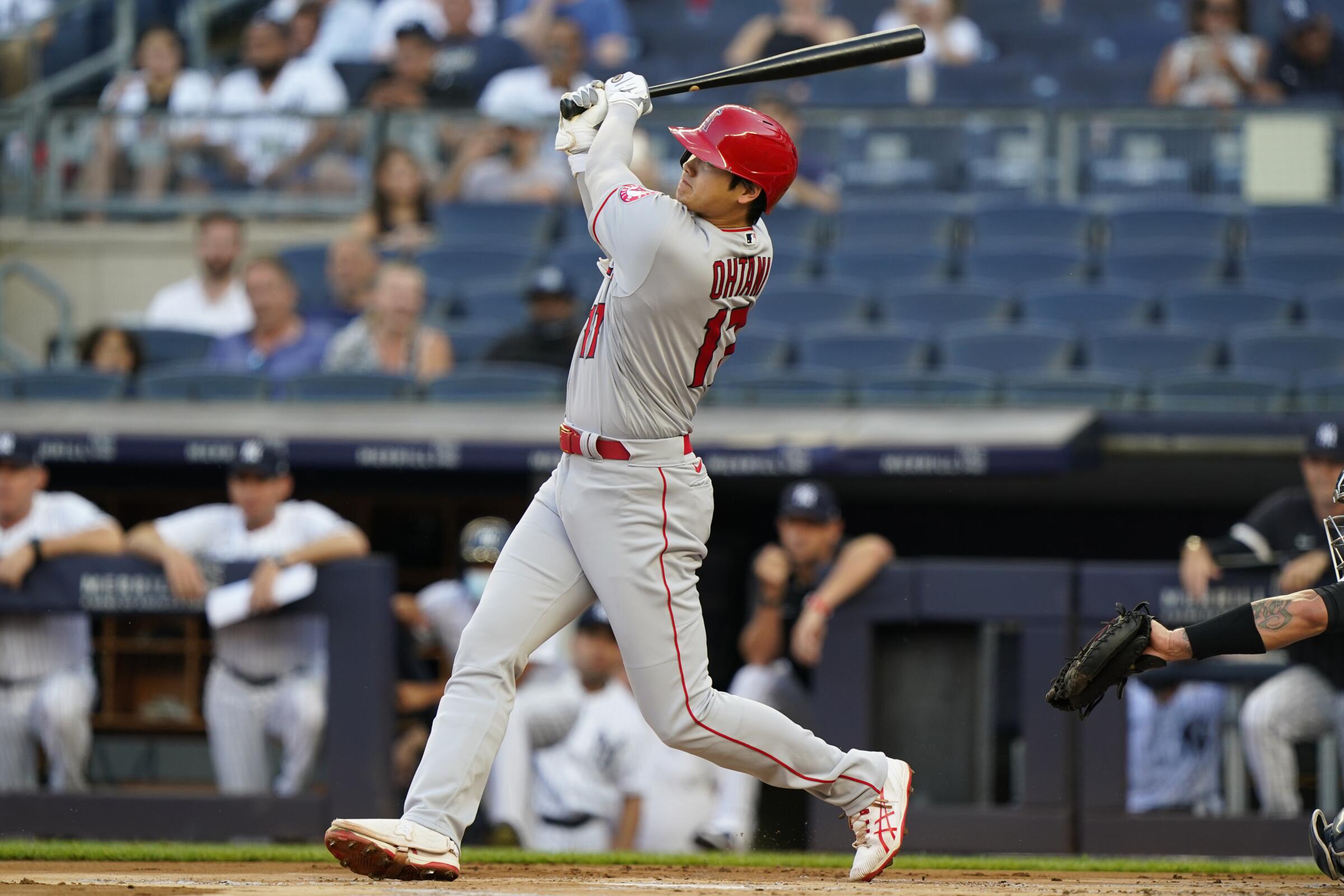
Pleased? Sure. Amazed? Of course.
But surprised?
Angels general manager Perry Minasian insists he isn’t, not when it comes to what he’s seen from Shohei Ohtani this season.
“I know that sounds crazy,” Minasian said.“But anybody who has seen him play in the past, especially in Japan — I know this is different — but the talent is there.”
Yes, even this level of talent.
“Seeing what I’ve seen in the past,” Minasian reiterated, having spent years scouting Ohtani in Japan before the two-way star came to the major leagues, “it doesn’t surprise me one bit.”
Ohtani hit two home runs Friday night in a win over the Baltimore Orioles, giving him a major league-leading 30. . On Tuesday, he will take the mound against the Boston Red Sox with a 3.60 earned-run average in 12 starts. Almost every night, he adds to a highlight reel the sport hasn’t seen in 100 years.
No longer hindered by injuries or mechanical inconsistencies, Ohtani will be in the starting lineup at the All-Star game on July 13 and is at the front of the American League most valuable player race. And while the talent always was there, the production finally is matching it.
The Angels scored seven runs in the ninth after Shohei Ohtani gave up seven runs in the first inning of an 11-8 win over the New York Yankees.
“Once you get yourself healthy and you know you belong here and there’s some confidence and things start going well, when you’re that talented with that kind of makeup, the sky’s the limit,” Minasian said.
Entering Saturday, Ohtani was batting .280 with an on-base-plus-slugging percentage of 1.068. On the mound, he has 83 strikeouts in 60 innings. And on the bases, he had 12 steals and four triples.
It’s all a result of improvement he has made since the start of the season, breakthroughs that turned tantalizing potential into stupefying reality.
Here are five of the biggest keys to Ohtani’s season so far.
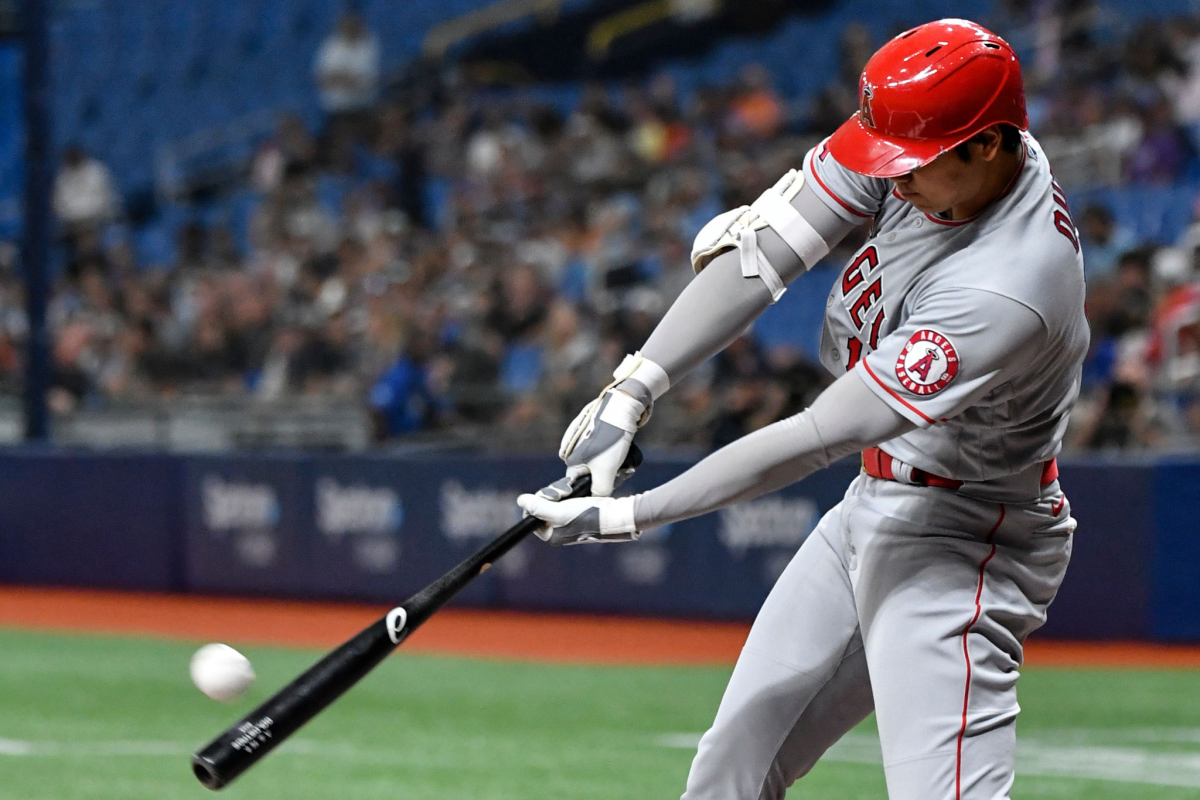
After hitting a ball harder than he ever had in his MLB career, a two-run double against the Kansas City Royals in April that left his bat at a scorching 119 mph, Ohtani was pleased — but also somewhat disappointed.
“The velocity was high,” he told Japanese reporters that night, “but the best-case scenario would’ve been to have a higher [launch] angle, so that it could have been a homer.”
It has been a point of emphasis for Ohtani, his focus not only on hitting the ball hard, but hitting it in the air as well.
It’s something he struggled with in his last couple seasons, posting below league-average launch angles that limited his ability to lift the ball over the fence.
After hitting 22 home runs as a rookie in 2018, when his average launch angle on batted balls was 12.3 degrees, his long ball totals tailed off to 18 in 2019 (when his average launch angle was 6.8 degrees) and seven in last year’s shortened schedule (when it was 10.1 degrees).
This season, that launch angle has climbed to 17.1 degrees — almost five degrees above league average — and has led to towering home runs such as the one he hit Friday in Tampa Bay, a 453-foot blast that clanged off a catwalk suspended some 50 feet above the right-field stands, or Monday in New York, a 413-foot shot deep into the Yankee Stadium bleachers.
Another indicator: Ohtani’s groundball rate has dropped to a career low 37.8%, while his fly ball rate is up to a career high 34.1%. .
It means when he gets a hold of a pitch now, it’s more often leaving the park. As a result, he is on pace for 60 home runs.
Watch every home run Angels two-way star Shohei Ohtani has hit so far this season.
“Last year, he was really spinning off everything; the bat never stayed through the strike zone very long,” Angels manager Joe Maddon said of Ohtani’s swing, whose improvements the slugger has attributed to better health and a rigorous offseason training program. “Now, almost every time he swings the bat it looks like he can leave the ballpark.”
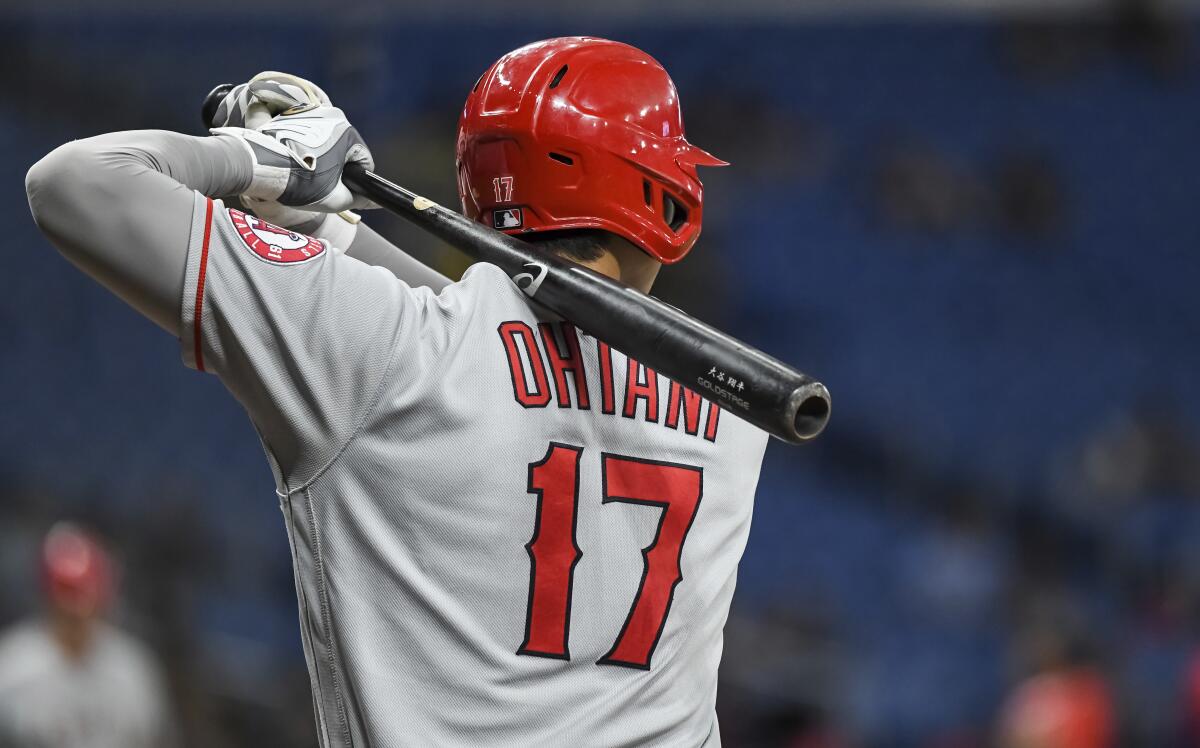
For all the mammoth home runs, the times Ohtani hasn’t swung have been just as impressive to Maddon.
It didn’t take long this season for pitchers to begin attacking Ohtani with caution, throwing in the zone less often and forcing him to be patient while waiting for his pitch.
Only 44.3% of pitches to Ohtani had been in the strike zone — the eighth-lowest rate of any major leaguer this season (minimum 500 pitches).
Nevertheless, Ohtani has adjusted. After drawing only six walks in his first 37 games this season, he has earned 27 (plus three intentional walks) in 39 games since.
His 18% walk rate since May 17 ranks fifth among qualified hitters. And his on-base-percentage has jumped from .304 to .364.
“He is definitely laying off of a lot of bad pitches in the last month,” Maddon said. “He’s really organized the strike zone well. He’s not just up there swinging.”
It’s been for good reason too.
When a pitcher does challenge him, Ohtani has done damage in almost every part of the zone. Even pitches over the upper and lower inside corners can leave the yard, such as the full-count curveball Yankees starter Michael King threw Monday.
“I definitely feel like I’m getting less pitches to hit,” Ohtani said last week through his interpreter, “but that doesn’t mean I’m going to change my approach.”
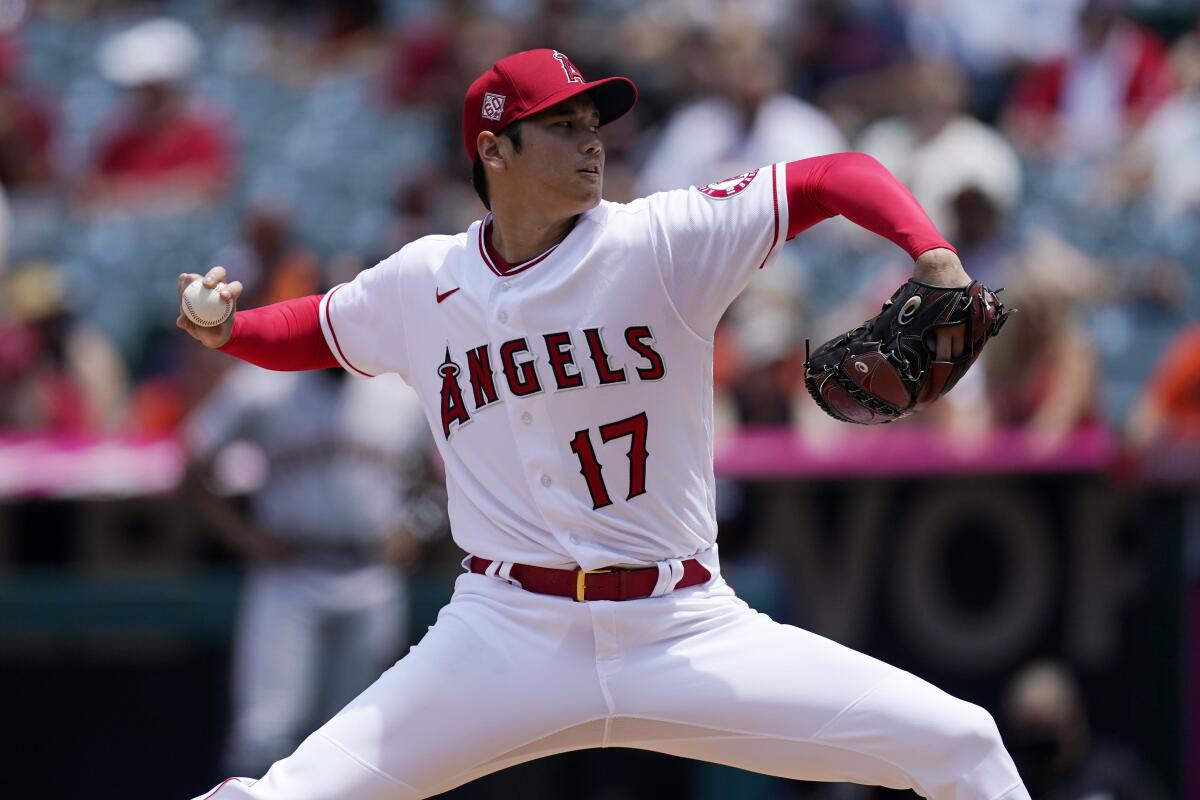
It was easy to forget this spring that Ohtani had pitched only four regular-season innings in three starts over 34 months — the result of a Tommy John surgery in 2018 and an arm injury that cut short his return to the mound last year.
While his raw stuff quickly returned, it took time for the consistency of his delivery to show up as well. In his first four starts, he walked 19 batters in 18 2/3 innings.
But in Ohtani’s last eight outings — even including his rough seven-run start in Yankee Stadium on Wednesday that lasted less than an inning — he has issued 16 walks in 41 1/3 innings. In that same stretch, he has struck out 51 batters.
The biggest difference: fastball command, with Ohtani throwing his four-seamer for strikes far more consistently the last two months.
One helpful indicator is a stat tracked by MLB’s Statcast system: “called strike plus whiff percentage,” a metric that records how often a pitcher gets a called strike or a swing and a miss.
Shohei Ohtani’s cartoon-like feats for the Angels have stunned the baseball world, but it’s very similar to the comic book world that influenced him.
In Ohtani’s first three starts, , he was getting a called strike or whiff on only 23% of his fastballs. Since then, that number has risen to 27%. While Ohtani’s velocity has varied during that stretch, from his triple-digit peak to the low-90s on occasion, his ability to throw his four-seamer for strikes has remained constant.
It may seem like a small difference, but it has helped the right-hander get ahead more often, creating pitcher’s counts that enable him to turn to a lethal array of breaking and offspeed pitches, and retire batters more quickly.
After failing to pitch past the fifth inning in his first three starts, he has pitched into the sixth inning or beyond in seven of his last nine appearances.
“Early in the year, the fastball was a shotgun. It was all over the place. And he was kind of like, jumping off the mound in his finish,” Maddon said. But lately, “he’s got a better finish to his delivery, and you’re not seeing the shotgun approach.”
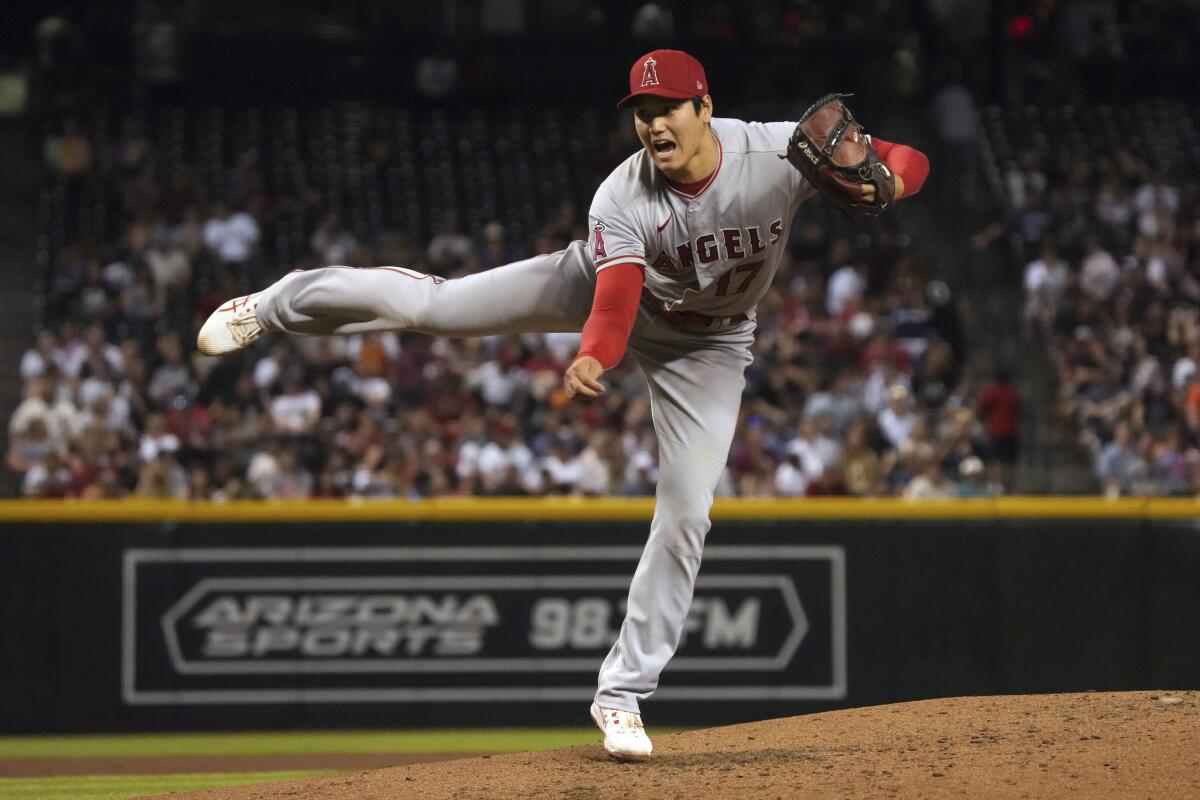
When the fastball is working, Ohtani can better set up his other pitches in various ways too.
Sometimes, that means buried splitter after splitter in the bottom of the zone. This year opponents are hitting just .086 against that pitch and have struck out 48 times.
But Ohtani uses other weapons as well. Against Texas in April, he opted for more cutters — a pitch he added this spring — and curveballs. Against Detroit this month, he threw sliders almost half the time.
Sometimes, the changes depend on how Ohtani is feeling with each pitch. Others, it is a reflection of his game plan against a particular lineup.
But as Ohtani has made consistent turns through the rotation — his first time pitching on a regular basis since the opening two months of the 2018 season — pitching coach Matt Wise said he can tell Ohtani is becoming increasingly comfortable with how to use his stuff.
“His ability to feel the baseball is probably some of the best I’ve ever seen,” Wise said. “With all the workload he has between hitting and pitching, there’s not a massive amount of work that can be done. But his feel for the baseball and how he stays behind the fastball, it’s incredible.”

Speed is one thing. Fearlessness is another.
When watching how Ohtani runs the bases, it didn’t take long for Angels third base coach Brian Butterfield to realize he possessed both. Ohtani scored the winning run in the ninth inning Friday, scoring from second on a single by Jared Walsh even though he had yet to touch third base when Orioles right fielder Ryan McKenna fielded the ball.
“He’s a tremendous accelerator, he’s a student and he’s not afraid,” Butterfield said. “That might sound like a trivial thing, but he’s one of those guys that isn’t fearful of running into an out.”
Ohtani is 12 for 15 in steals and, according to Statcast, ranks in the top 10% of big leaguers in sprint speed.
He’s on pace to have more than 20 steals, which would make him the first Angel since Mike Trout in 2018 to have at least 20 steals and 20 home runs. And he’s one of only 10 players in the majors already with double-digit steals and homers.
Butterfield said it’s no coincidence.
Angels dual-threat Shohei Ohtani will participate in the 2021 Home Run Derby. He’s third in the MLB in home runs and will be the first pitcher ever to participate.
“Whenever we have our advanced meetings, whenever we’re talking about baserunning or the opposition, you can hear Ippei [Mizuhara, Ohtani’s interpreter] in the back of the room with Shohei, talking to him and translating everything that’s being said.”
Butterfield added: “He’s a student of the game. He cares about getting good breaks and doing all the things that we try to do on the bases.”
Whenever Ohtani does turn on the jets, it usually leads to a lighthearted interaction between Butterfield and third basemen from opposing teams. And by now, almost halfway through a season that continues to meet even the highest expectations for Ohtani, Butterfield is well practiced with his response.
“Guys around the league playing third base, they say, ‘What does this guy not do?’ ” Butterfield said. “I say, ‘He does everything. He cares about it. And he’s gonna keep being a problem for you guys. Because he’s going to keep getting better.’ ”
Go beyond the scoreboard
Get the latest on L.A.'s teams in the daily Sports Report newsletter.
You may occasionally receive promotional content from the Los Angeles Times.